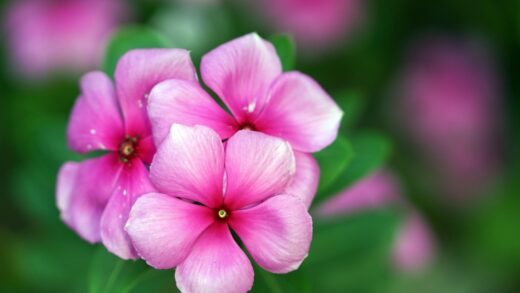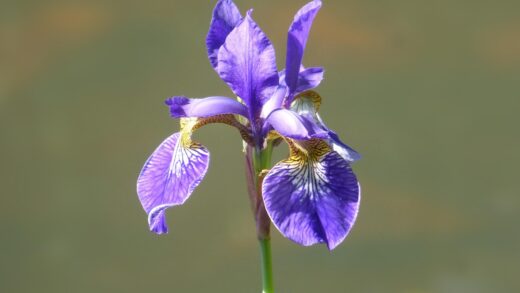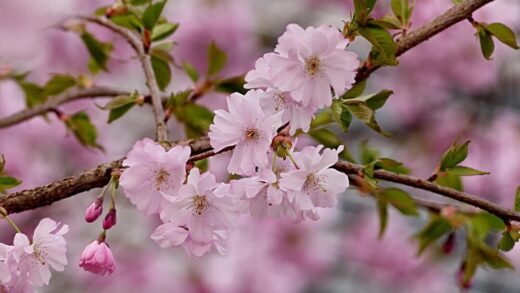While the Taiwanese toad lily is generally regarded as a robust and relatively trouble-free perennial, it is not entirely immune to the challenges posed by certain pests and diseases. Like any plant in the garden, its health can be compromised, particularly when it is grown in less-than-ideal conditions. Understanding the potential threats and knowing how to identify them early is key to maintaining the vigor and beauty of this unique autumn-blooming plant. A proactive approach, focused on prevention through good cultural practices, is always more effective than reactive treatments. By fostering a healthy growing environment, you can significantly minimize the risk of problems and ensure your toad lily remains a stunning feature in your shade garden.
The most common adversaries of the Taiwanese toad lily are slugs and snails. These mollusks thrive in the same cool, moist, and shady environments that the toad lily prefers, and they have a particular appetite for its tender leaves and stems. The damage they inflict is unmistakable, characterized by large, ragged holes chewed in the foliage and the tell-tale slime trails they leave behind in their wake. A severe infestation, especially on young plants, can defoliate and significantly weaken the plant, while even minor damage can detract from its ornamental value.
Preventing and controlling slugs and snails requires a multi-pronged approach. Good garden hygiene is the first line of defense; remove potential hiding places like fallen leaves, weeds, and debris from around the base of the plants. You can create physical barriers by surrounding the plants with a rough material like crushed eggshells, diatomaceous earth, or copper tape, which slugs and snails are reluctant to cross. Encouraging natural predators such as toads, ground beetles, and birds into your garden can also provide effective, long-term biological control. For more severe infestations, iron phosphate-based slug baits, which are safe for pets and wildlife, can be a very effective option.
Aphids are another potential pest, although they tend to be a less frequent problem for toad lilies. These small, sap-sucking insects typically congregate on the undersides of new leaves and on tender new shoots. A large infestation can cause the leaves to curl, yellow, and become distorted. As they feed, aphids also excrete a sticky substance called honeydew, which can lead to the growth of black sooty mold on the leaf surfaces. While this mold is not directly harmful to the plant, it is unsightly and can interfere with photosynthesis.
Managing aphids is usually straightforward. Often, a strong jet of water from a hose is all that is needed to dislodge a small population from the plant. For more persistent infestations, insecticidal soap or horticultural oil can be used. These products work by smothering the soft-bodied insects and are generally safer for beneficial insects than broad-spectrum chemical pesticides. Encouraging beneficial insects like ladybugs, lacewings, and hoverflies, which are natural predators of aphids, is also a highly effective and sustainable control method. A healthy garden ecosystem with a diversity of plants will naturally attract these helpful allies.
More articles on this topic
Fungal diseases
One of the most common fungal diseases that can affect the Taiwanese toad lily, particularly in overly damp or humid conditions, is botrytis, also known as gray mold. This disease typically appears as soft, grayish-brown blotches on the leaves, stems, and flowers. As the disease progresses, a fuzzy gray mold may become visible, and the affected plant parts can quickly rot and collapse. Botrytis thrives in cool, moist weather and is often a problem in gardens with poor air circulation or where plants are overcrowded.
Preventing botrytis is centered on improving environmental conditions. Ensure your toad lilies are properly spaced to allow for good airflow between plants. When watering, use a soaker hose or water at the base of the plant to keep the foliage as dry as possible, and water in the morning so that any moisture on the leaves has a chance to evaporate during the day. If you spot signs of botrytis, promptly remove and destroy any infected plant parts to prevent the spores from spreading. In severe cases, a fungicide may be necessary, but improving cultural practices is the most effective long-term solution.
Another fungal issue that can occasionally appear is powdery mildew. This disease is easily identified by the characteristic white, powdery patches that form on the surfaces of the leaves. While it is not typically fatal, a severe infection can reduce the plant’s photosynthetic ability, weaken it, and detract from its appearance. Powdery mildew, unlike many other fungi, can thrive in both humid and dry conditions, but it is most prevalent in shady areas with poor air circulation.
Similar to botrytis, the best defense against powdery mildew is good air circulation. Proper spacing and selective pruning of surrounding plants to improve light penetration and airflow can make a significant difference. If powdery mildew does appear, you can often manage it with sprays of horticultural oil or a solution of potassium bicarbonate. There are also commercial fungicides available that are specifically formulated for powdery mildew. Removing and disposing of heavily infected leaves can also help to slow the spread of the disease.
More articles on this topic
Root and crown rot
Root and crown rot are perhaps the most serious threats to the health of a Taiwanese toad lily, as they are often fatal. These conditions are not caused by a single pathogen but rather by a variety of soil-borne fungi and water molds, such as Pythium and Phytophthora. The problem almost always begins with soil that is too wet for too long. When the soil is saturated, it becomes depleted of oxygen, and the plant’s roots begin to suffocate, die, and decay. This provides an entry point for the opportunistic pathogens to infect the plant.
The above-ground symptoms of root and crown rot can be deceptive and often mimic those of underwatering. The plant may appear wilted, the leaves may turn yellow or brown, and the overall growth will be stunted. However, if you inspect the plant at the soil line, the base of the stems (the crown) may appear dark, mushy, and rotted. If you were to dig up the plant, the roots would be similarly soft, dark brown or black, and would easily pull apart, instead of being firm and white.
Prevention is the only effective cure for root and crown rot. The most critical preventive measure is to ensure the plant is grown in well-draining soil. Before planting, amend heavy clay soils with copious amounts of organic matter like compost or pine bark fines to improve its structure and drainage. It is also crucial to avoid planting the toad lily too deeply. The crown of the plant, where the stems emerge from the rhizomes, should be situated at or even slightly above the soil level to keep it from staying excessively wet.
Once root or crown rot has taken hold, it is very difficult to save the plant. If you catch it in the very early stages, you might be able to salvage it by digging it up, carefully cutting away all of the rotted, discolored tissue with a sterilized knife, and replanting the healthy remainder in a new location with better drainage. However, in most cases, the best course of action is to remove and destroy the infected plant to prevent the pathogens from spreading to other nearby plants.
Environmental stress factors
Environmental stress can significantly weaken a Taiwanese toad lily, making it much more susceptible to the pests and diseases previously discussed. One of the most common stressors is improper sun exposure. As a shade-loving woodland plant, the toad lily’s foliage is not adapted to handle intense, direct sunlight. When planted in a location that is too sunny, especially in the afternoon, the leaves will inevitably develop sun scorch, which appears as brown, dry, and crispy patches. This damage is permanent and weakens the plant’s overall health.
Drought stress is another major factor that can predispose the plant to problems. The Taiwanese toad lily requires consistently moist soil to thrive. When the soil is allowed to dry out completely, the plant’s physiological processes are disrupted, leading to wilting, leaf drop, and a diminished capacity to defend itself against pests and diseases. A plant that is under chronic water stress is an easy target for opportunistic insects and pathogens. Maintaining a consistent watering schedule and using mulch to conserve soil moisture are key to preventing this type of stress.
Poor soil conditions can also be a significant source of stress. Planting a toad lily in compacted, nutrient-poor soil without proper amendment deprives it of the foundation it needs for healthy growth. A plant struggling in poor soil will have a weaker root system and will lack the vigor to fend off potential problems. Similarly, soil with an improper pH can “lock up” essential nutrients, leading to deficiencies even if the nutrients are present in the soil. Taking the time to create a rich, well-draining, slightly acidic to neutral soil environment is a crucial investment in the plant’s long-term health.
Finally, physical damage to the plant can create entry points for diseases. Damage from lawnmowers, string trimmers, or careless foot traffic can wound the stems and crown of the plant. These open wounds are an invitation for fungal spores and bacteria to enter and establish an infection. To prevent this, plant your toad lilies in protected areas of the garden, away from high-traffic paths, and be mindful when performing garden maintenance around them. A layer of mulch can also provide a visual buffer zone.
Integrated pest management
The most sustainable and effective way to deal with pests and diseases on your Taiwanese toad lily is to adopt an Integrated Pest Management (IPM) approach. IPM is a holistic strategy that prioritizes prevention and uses a range of control methods, with chemical pesticides being a last resort. The foundation of IPM is creating a healthy, resilient plant through proper cultural practices. This means selecting the right plant for the right place, preparing the soil properly, providing appropriate water and nutrients, and ensuring good air circulation. A healthy plant is naturally more resistant to problems.
The next step in IPM is regular monitoring. Make it a habit to inspect your toad lilies and other garden plants frequently for any early signs of trouble. Look under the leaves for aphids, check the soil for slime trails, and keep an eye out for any unusual spots or discoloration on the foliage. Catching a problem early, when it is just a small colony of aphids or the first sign of a fungal spot, makes it much easier to manage. Early intervention might be as simple as hand-picking a few slugs or pruning off a single affected leaf.
If a problem does arise, IPM prioritizes the least toxic control methods first. This could include physical controls, like washing aphids off with water or using barriers against slugs. It also includes biological controls, which involves encouraging the natural enemies of pests. By planting a diversity of flowering plants, you can attract beneficial insects like ladybugs, lacewings, and predatory wasps that will help to keep pest populations in check naturally. This creates a self-regulating garden ecosystem.
Chemical pesticides should only be used as a targeted, last-resort option when other methods have failed and the health of the plant is at significant risk. If you must use a pesticide, choose the most specific and least toxic option available, such as insecticidal soap or horticultural oil, rather than a broad-spectrum insecticide that will kill beneficial insects along with the pests. Always read and follow the label instructions carefully and apply the product responsibly to minimize its impact on the wider environment.


















